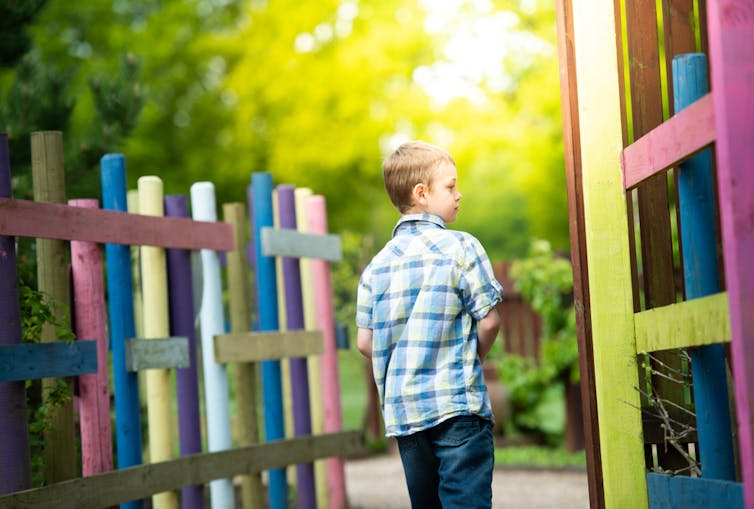
Kendra Thomson, Brock University
Preventable injuries are the leading cause of death for Canadians under the age of 45. Unfortunately, individuals with autism spectrum disorder (ASD) are two to three times more likely to experience a preventable injury than those without.
Children with ASD are particularly prone to poisoning, suffocation and wandering that can lead to death by drowning or vehicular accident.
They often need systematic training to learn safety skills. And they need explicit instruction — to increase the likelihood of using these skills effectively in different settings and with different people.
Teaching safety skills to children with ASD at a young age is of utmost importance. However, preliminary research suggests that caregivers of children with ASD may not be comfortable teaching these safety skills themselves due to a lack of knowledge or experience.
As an associate professor at Brock University and Board Certified Behaviour Analyst-Doctoral (BCBA-D), I have been working with a community clinician and graduate students to empower caregivers to teach safety skills to their children.
A model for teaching children with autism
Behavioural skills training (BST) is a strategy commonly used to teach a variety of skills to people with disabilities. This can include safety skills such as learning how to solicit help, what to do upon finding a firearm and reducing the risks of abduction.
Research suggests that the BST model ensures that the person being trained not only understands the new skill, but is able to perform it accurately.

The model involves: (1) instructions, (2) modelling, (3) rehearsal and (4) feedback. First, the trainer provides verbal and/or written instruction on how to complete the skill, and a brief rationale. Next, the trainer models the skill by provides an accurate demonstration.
The trainer then provides the learner with the opportunity to practice the skill and offers feedback in the form of descriptive praise if the learner completes the skill accurately. If the learner does not complete the skill accurately, the trainer offers corrective feedback.
These rehearsal and feedback steps are repeated until the learner is able to accurately execute the skill.
Instructions must be clear and concise
The first step to teaching safety skills is to select the behaviour you would like to teach (for example, what to do when lost). The next step involves outlining the instructions to use when implementing BST.
It is important that instructions are clear and concise. We recommend breaking the skill down into three or fewer steps. For example, when we teach children what to do if they become lost or separated from their caregiver, we teach them to: (1) call out for caregiver, (2) find a worker, (3) tell the worker they are lost.
Once you have determined the instructions, ensure that you have all of the materials required — for example, props. Also, ensure the environment adequately facilitates learning for your child by eliminating any distractions.
Follow these five steps
The following training steps can be applied to teaching a variety of safety skills.
Provide instructions relevant to the skill to your child. For example: “Sometimes when we are at the grocery store, we can get separated, which can be scary. If this happens, I want you to do three things. First, call out for me in a loud voice. Next, if I do not respond, find a worker. Then, tell the worker, ‘I’m lost.’”
Model the skill for your child, by first getting their attention, and then demonstrating all three steps in a mock scenario: “Let’s pretend we are in the store and I get separated from you.”
Ask your child to practice the three steps.
Provide feedback based on their performance, for example if your child calls out for you but in a quiet voice, you can say: “I like how you called out for me, but remember to use a loud voice.”
Continue rehearsal and feedback until you are confident that your child can perform the skill.
Practise in a natural environment
It is also important to eventually practice the skill in the environment where the skill will be needed, such as in public settings.

For example, can the child perform the skill if separated in a grocery store? As a safety precaution have someone “under-cover” to also watch the child and to see if they engage in the appropriate steps.
If the child does not engage in the appropriate steps, provide feedback and repeat until everyone is confident.
If caregivers practice teaching basic safety skills using the steps of BST at home with their child, it may help to keep them safe if dangerous situations arise.
[ Deep knowledge, daily. Sign up for The Conversation’s newsletter. ]![]()
Kendra Thomson, Associate Professor in the Department of Applied Disability Studies, Brock University
This article is republished from The Conversation under a Creative Commons license. Read the original article.

